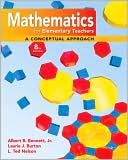Category Books
- Fiction Books & Literature
- Graphic Novels
- Horror
- Mystery & Crime
- Poetry
- Romance Books
- Science Fiction & Fantasy
- Thrillers
- Westerns
- Ages 0-2
- Ages 3-5
- Ages 6-8
- Ages 9-12
- Teens
- Children's Books
- African Americans
- Antiques & Collectibles
- Art, Architecture & Photography
- Bibles & Bible Studies
- Biography
- Business Books
- Christianity
- Computer Books & Technology Books
- Cookbooks, Food & Wine
- Crafts & Hobbies Books
- Education & Teaching
- Engineering
- Entertainment
- Foreign Languages
- Game Books
- Gay & Lesbian
- Health Books, Diet & Fitness Books
- History
- Home & Garden
- Humor Books
- Judaism & Judaica
- Law
- Medical Books
- New Age & Spirituality
- Nonfiction
- Parenting & Family
- Pets
- Philosophy
- Political Books & Current Events Books
- Psychology & Psychotherapy
- Reference
- Religion Books
- Science & Nature
- Self Improvement
- Sex & Relationships
- Social Sciences
- Sports & Adventure
- Study Guides & Test Prep
- Travel
- True Crime
- Weddings
- Women's Studies
Mathematics for Elementary Teachers: A Conceptual Approach » (8th Edition)

Authors: Albert B. Bennett, Ted Nelson, Laurie Burton
ISBN-13: 9780073519456, ISBN-10: 0073519456
Format: Hardcover
Publisher: McGraw-Hill Companies, The
Date Published: January 2009
Edition: 8th Edition
Author Biography: Albert B. Bennett
Book Synopsis
Overview:
Albert B. Bennett, Jr. and L. Ted Nelson have presented hundreds of workshops on how to give future teachers the conceptual understanding and procedural fluency they will need in order to successfully teach elementary-school mathematics. The Seventh Edition of Mathematics for Elementary Teachers: A Conceptual Approach continues their innovative, time-tested approach: an emphasis on learning via specific, realistic examples and the extensive use of visual aids, hands-on activities, problem-solving strategies and active classroom participation. Special features in the text ensure that prospective teachers will gain not only a deeper understanding of the mathematical concepts, but also a better sense of the connections between their college math courses and their future teaching experiences, along with helpful ideas for presenting math to their students in a way that will generate interest and enthusiasm. The text draws heavily on NCTM Standards and contains many pedagogical elements designed to foster reasoning, problem-solving and communication skills. The Seventh Edition will also incorporate in-text references to the virtual manipulative kit and other online resources that enhance the authors' explanations and examples.
Table of Contents
1 Problem Solving
2.1 Sets and Venn Diagrams 2.2 Functions, Coordinates, and Graphs 2.3 Introduction to Deductive Reasoning3 Whole Numbers
3.1 Numeration Systems 3.2 Addition and Subtraction 3.3 Multiplication 3.4 Division and Exponents 4 Number Theory
4.1 Factors and Multiples4.2 Greatest Common Factor and Least Common Multiple 5 Integers and Fractions
5.1 Integers5.2 Introduction to Fractions 5.3 Operations with Fractions 6 Decimals: Rational and Irrational
6.1 Decimals and Rational Numbers 6.2 Operations with Decimals 6.3 Ratio, Percent, and Scientific Notation 6.4 Irrational and Real Numbers 7 Statistics
7.1 Collecting and Graphing Data 7.2 Describing and Analyzing Data 7.3 Sampling, Predictions, and Simulations8 Probability
8.1 Single-Stage Experiments 8.2 Multistage Experiments 9 Geometric Figures
9.1 Plane Figures 9.2 Polygons and Tessellations 9.3 Space Figures 9.4 Symmetric Figures10 Measurement
10.1 Systems of Measurement10.2 Area and Perimeter 10.3 Volume and Surface Area11 Motions in Geometry
11.1 Congruence and Constructions 11.2 Congruence Mappings 11.3 Similarity Mappings References for Research Statements by ChaptersAnswers to Selected Activities Answers to Odd-Numbered Exercises, Problems and Chapter Tests
Subjects
 Teaching & Teacher Training
Teaching & Teacher Training  Teaching - Mathematics
Teaching - MathematicsScience & Nature
 All Science & Nature
All Science & Nature  Mathematics
MathematicsNonfiction
 Science & Nature
Science & Nature  Mathematics
MathematicsNonfiction
 Science & Nature
Science & Nature  All Science & Nature
All Science & Nature
